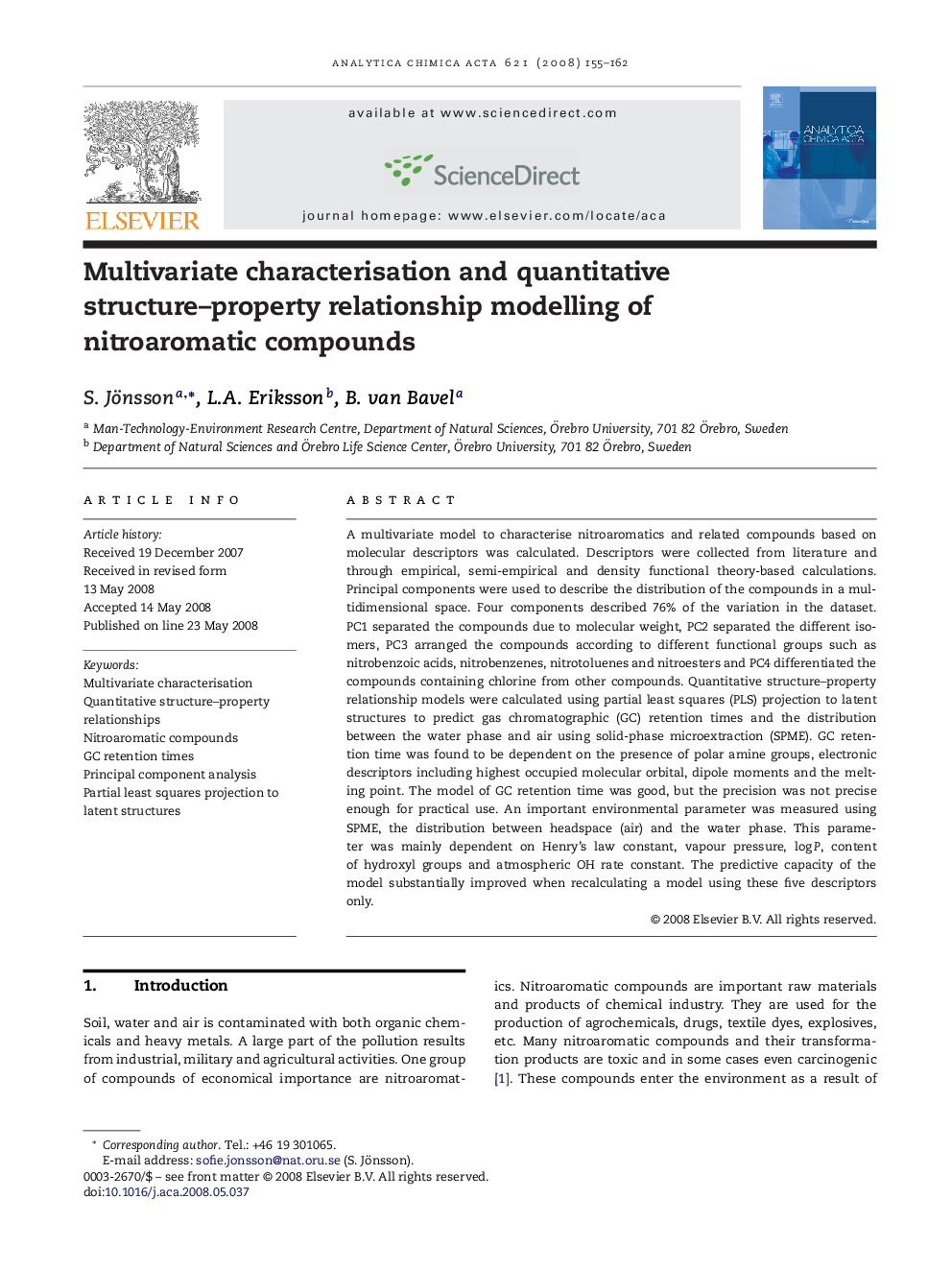| Article ID | Journal | Published Year | Pages | File Type |
|---|---|---|---|---|
| 1170070 | Analytica Chimica Acta | 2008 | 8 Pages |
A multivariate model to characterise nitroaromatics and related compounds based on molecular descriptors was calculated. Descriptors were collected from literature and through empirical, semi-empirical and density functional theory-based calculations. Principal components were used to describe the distribution of the compounds in a multidimensional space. Four components described 76% of the variation in the dataset. PC1 separated the compounds due to molecular weight, PC2 separated the different isomers, PC3 arranged the compounds according to different functional groups such as nitrobenzoic acids, nitrobenzenes, nitrotoluenes and nitroesters and PC4 differentiated the compounds containing chlorine from other compounds. Quantitative structure–property relationship models were calculated using partial least squares (PLS) projection to latent structures to predict gas chromatographic (GC) retention times and the distribution between the water phase and air using solid-phase microextraction (SPME). GC retention time was found to be dependent on the presence of polar amine groups, electronic descriptors including highest occupied molecular orbital, dipole moments and the melting point. The model of GC retention time was good, but the precision was not precise enough for practical use. An important environmental parameter was measured using SPME, the distribution between headspace (air) and the water phase. This parameter was mainly dependent on Henry's law constant, vapour pressure, log P, content of hydroxyl groups and atmospheric OH rate constant. The predictive capacity of the model substantially improved when recalculating a model using these five descriptors only.
